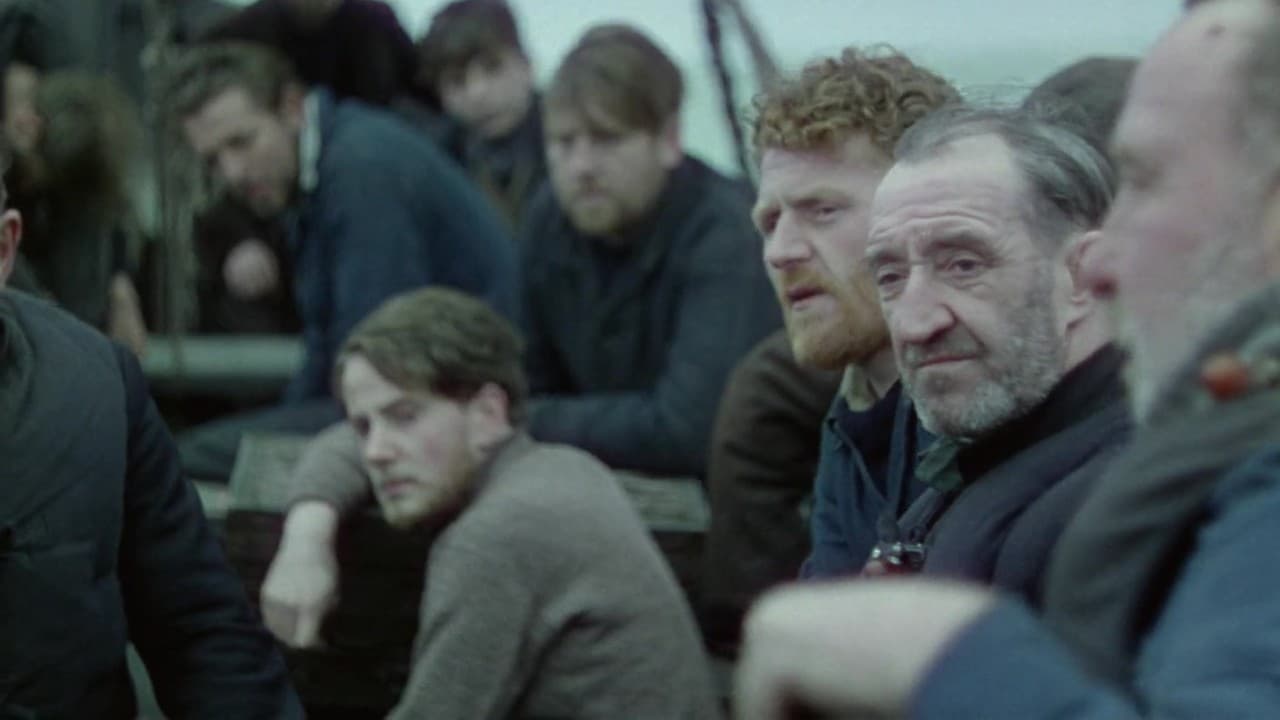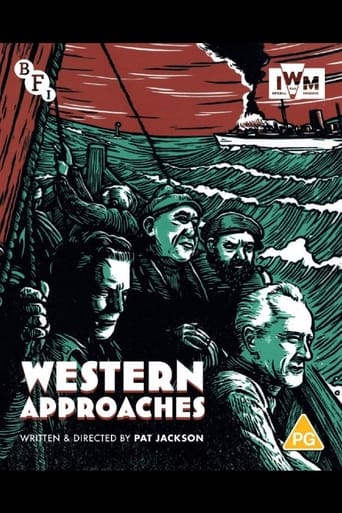

Good , But It Is Overrated By Some
... View MoreIt's fun, it's light, [but] it has a hard time when its tries to get heavy.
... View MoreAlthough it has its amusing moments, in eneral the plot does not convince.
... View MoreA film with more than the usual spoiler issues. Talking about it in any detail feels akin to handing you a gift-wrapped present and saying, "I hope you like it -- It's a thriller about a diabolical secret experiment."
... View MoreIt's the middle of the war and there is a gap in mid-Atlantic between North America and England, desperate for supplies. A freighter is torpedoed and half a dozen crew find themselves adrift in a lifeboat with a makeshift sail, heading for the Irish coast which is far, far away. So far that it's doubtful they'll make it.The radio operator (or, pardon me, the wireless operator) has brought along a small, battery-operated transmitter, which he uses to send distress signals in hopes that a friendly vessel will pick them up. One does, another cargo ship, and she heads towards the lifeboat's position. The problem is that a U-boat has also received the calls. The KaEl assumes, correctly, that a British ship is coming to their rescue, so the U-boat bides its time, waiting for juicier fruit.The cargo ship finally comes, just as Sparks has exhausted the batteries of his transmitter, but despite the warnings of the men in the boat, the U-boat manages to put a torpedo into the rescue ship. The submarine is tricked into surfacing and there is a shoot out at sea.It was all filmed at sea and I can understand the pride shown by the director on the audio commentary. Yet, on the whole, it was disappointing. The actors were drawn from the ranks of seamen. They have the proper face but they can't act, and it shows. Two kinds of film were used in the shooting and one, three-strip technicolor, is clearly superior to the other.The Brits made some splendid movies during and after the war but in this instance one misses the faces that were to become so familiar. Where is Denholm Elliot? Shouldn't Dirk Bogarde be in here somewhere? And I longed for Bernard Lee. True, the score was conducted by Muir Matheson but Malcolm Arnold is nowhere in sight.It's a good, taut story but it lacks professionalism.
... View MoreThis was yet another classic British wartime 'documentary', one I was wary of in view of its feature-length (80 minutes) – especially, at this juncture, having been somewhat let down by a few of its contemporaneous ilk – but which would prove a surprisingly positive experience. Like the recently-viewed THE SILENT VILLAGE (1943), the documentary epithet (not to mention its title!) is misleading here, since it is actually a narrative film – albeit a re-enactment of a true WWII episode – that just happens to feature non-professional actors. Indeed, it can be said that such wartime efforts were "neo-realist" before the term was even coined or the style had actually taken off in Italy! Still, it is debatable whether the end result would have been this noteworthy had professional performers been employed rather than real naval servicemen – since it tells a standard (albeit undeniably gripping) tale of a rescue at sea and the ensuing scuttling of a U-Boat!Apart from Clifton Parker's evocative score, two novelty aspects are employed here that make the whole show all the more appealing to the casual viewer: the fact that it was shot in Technicolor (by the great Jack Cardiff, no less); the documentary pedigree itself allowed for (or, I should say, excused) the copious use of language that would otherwise not have been permissible for the era – such as "bastards", "bloody", "damn" and "hell"...not to mention sketches of naked women adorning the walls of the radio operators' quarters! For what it is worth, director Jackson would eventually break into commercial film-making but never again approached the reasonable level of excellence achieved in this case!
... View More'Rome Open City', premiered in September 1945, was made with non- professionals; it depicted the war with dramatic intensity; it was filmed in the street as well as the studio. But if you change 'in the street' to 'on the open sea' I could as well be referring to 'Western Approaches' premiered almost a year earlier in December 1944. Rossellini of course went on to even greater things, whereas Pat Jackson, the maker of 'Western Approaches', went on to Hollywood and oblivion of a kind. Pity, because his wartime film is outstanding.For two reasons. It seems to be a drama but is it a documentary about the Atlantic convoys and the perils they faced? or is it a drama made realistic by documentary techniques? That ambivalence makes the film much more compelling, and Jackson can especially take the credit for the melodramatic but still credible idea at the centre of the film which lends it the suspense proper to a fiction film, that of the triangular situation between lifeboat, u-boat and destroyer. The second reason is the use of non-professionals, schooled in part by Jackson to use eye and voice, but also semi-improvising on the script, following it but also saying things in their own words (including a lot of natural naval swearing which the censors jumped upon unfortunately). They bring no baggage of other roles and lend an authenticity at all levels from captain to other officers to the merchant seamen in the lifeboat. It makes the film mesmerizing. Not to be sure Robert Bresson's 'involuntary expressive' but certainly naturally rather than artificially expressive which should be cinema's truest technique.www.timcawkwell.co.uk
... View MoreVery worthwhile reading Pat Jackson's memoir of his beginnings in film, in "Retake Please - Night Mail to Western Approaches" Conversational style easy to follow, and fascinating to learn how he and his crew achieved what they did, sometime through great hardship. He gives a lot of detail as to how effects were achieved, or not as the case may be. Reading his accounts brings home how ground breaking he was in creating his "documentary" style. Much criticism has been levelled at other war documentarians (EG Frank Hurley, II World war, Antarctic, photographer) for falsifying photos in order to achieve the romance of or horror of what they wanted to convey. It is clear in this memoir that Pat Jackson saw himself as having a "rallying the troops" job to do and he had no qualms using the illusions capable in the film technology of the time to get his message across. The most satisfying aspect of this memoir is his warmth and fondness for the people he met along the way, he often quotes from their first meetings in great detail, particularly the non professional casts he employed in Western Approaches. A wonderful read.
... View More